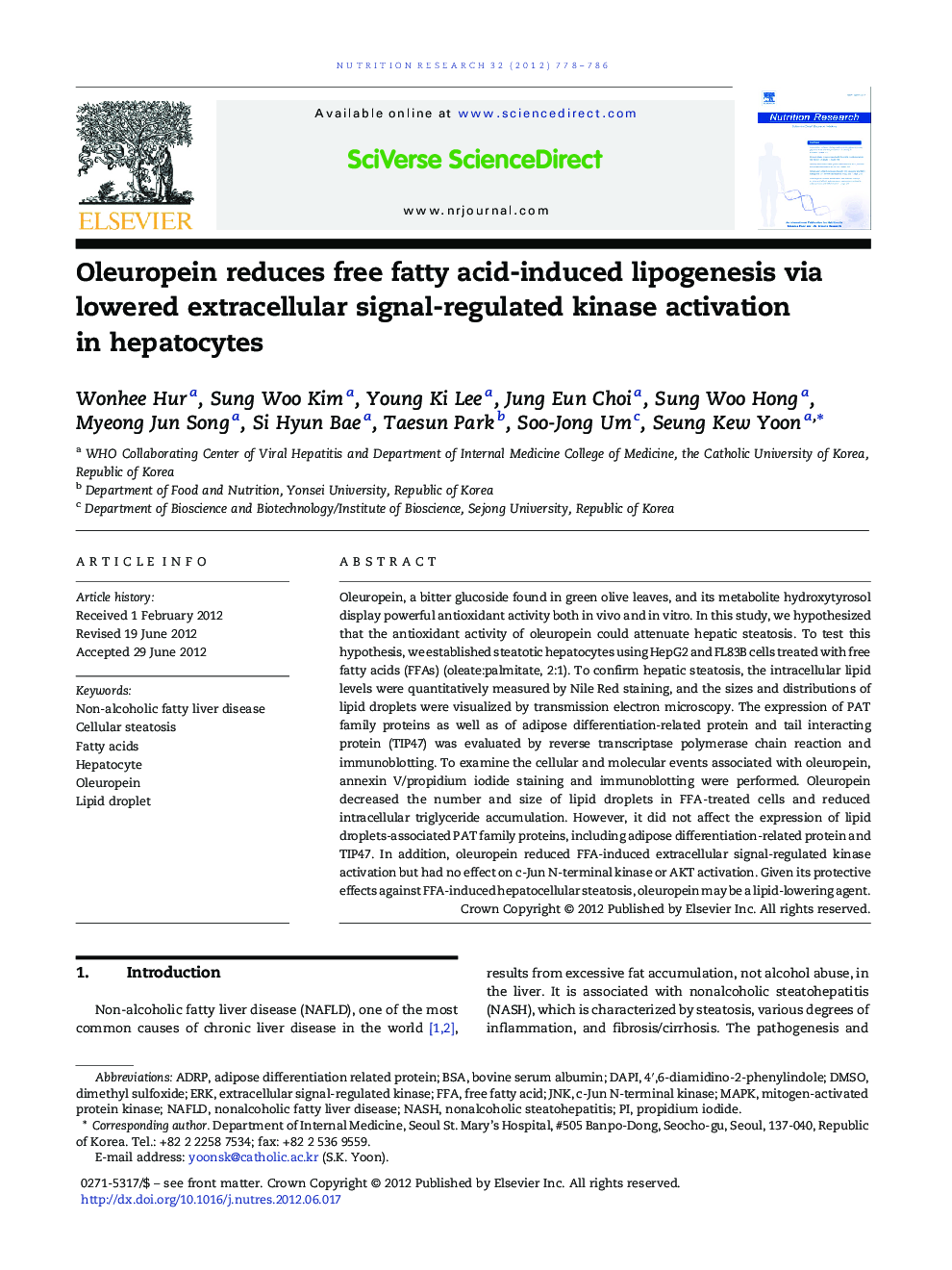| Article ID | Journal | Published Year | Pages | File Type |
|---|---|---|---|---|
| 2809108 | Nutrition Research | 2012 | 9 Pages |
Oleuropein, a bitter glucoside found in green olive leaves, and its metabolite hydroxytyrosol display powerful antioxidant activity both in vivo and in vitro. In this study, we hypothesized that the antioxidant activity of oleuropein could attenuate hepatic steatosis. To test this hypothesis, we established steatotic hepatocytes using HepG2 and FL83B cells treated with free fatty acids (FFAs) (oleate:palmitate, 2:1). To confirm hepatic steatosis, the intracellular lipid levels were quantitatively measured by Nile Red staining, and the sizes and distributions of lipid droplets were visualized by transmission electron microscopy. The expression of PAT family proteins as well as of adipose differentiation-related protein and tail interacting protein (TIP47) was evaluated by reverse transcriptase polymerase chain reaction and immunoblotting. To examine the cellular and molecular events associated with oleuropein, annexin V/propidium iodide staining and immunoblotting were performed. Oleuropein decreased the number and size of lipid droplets in FFA-treated cells and reduced intracellular triglyceride accumulation. However, it did not affect the expression of lipid droplets-associated PAT family proteins, including adipose differentiation-related protein and TIP47. In addition, oleuropein reduced FFA-induced extracellular signal-regulated kinase activation but had no effect on c-Jun N-terminal kinase or AKT activation. Given its protective effects against FFA-induced hepatocellular steatosis, oleuropein may be a lipid-lowering agent.
